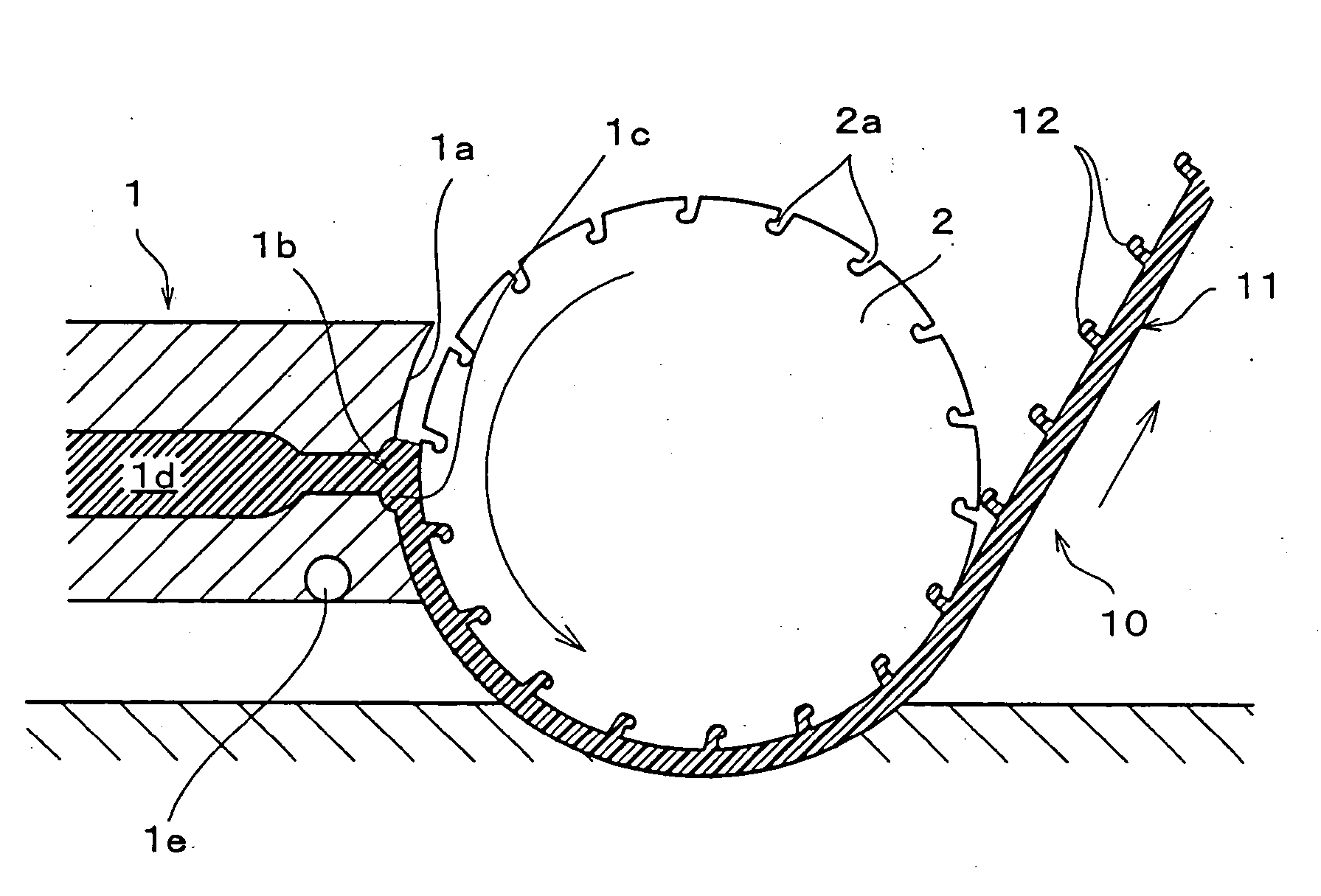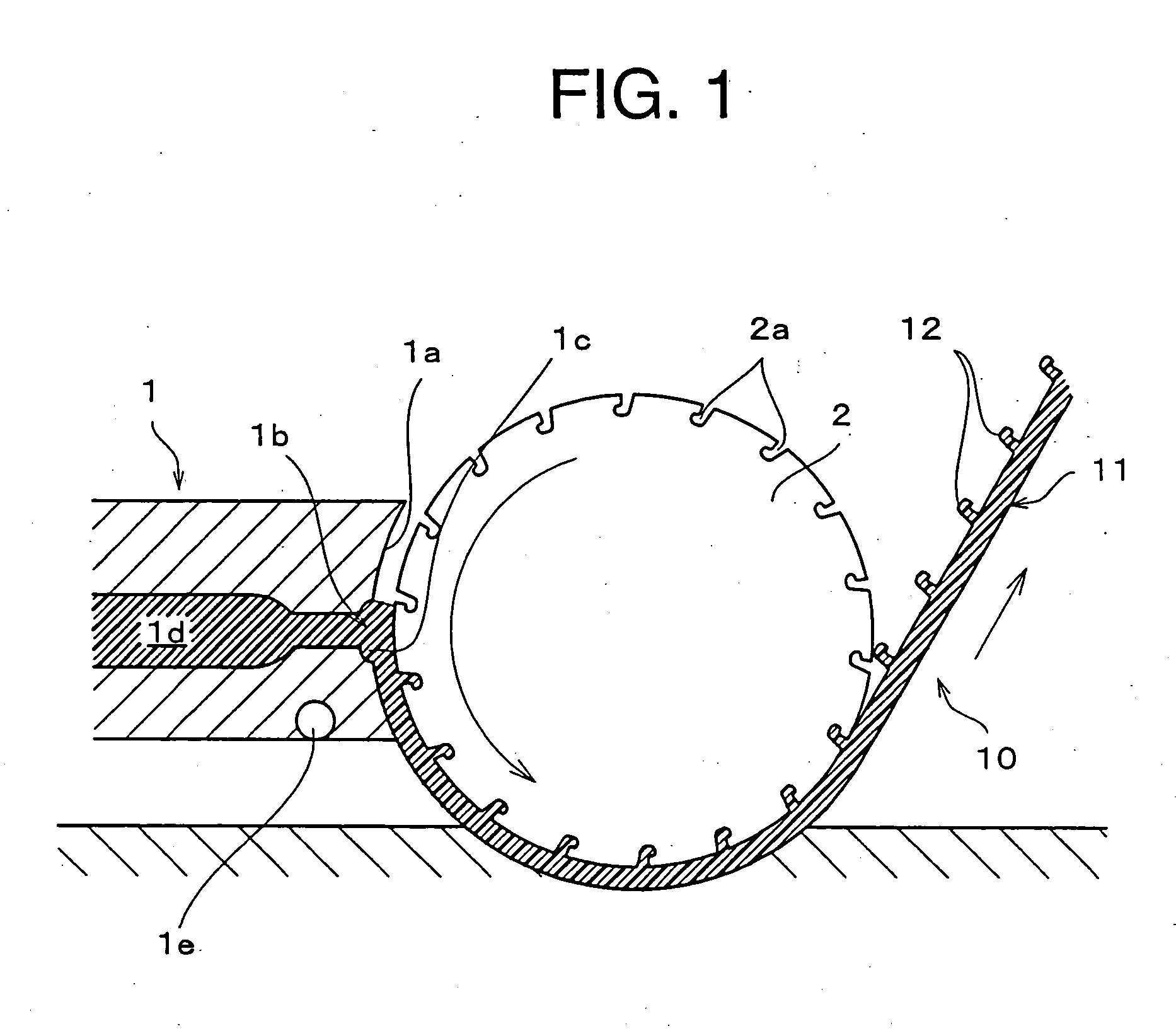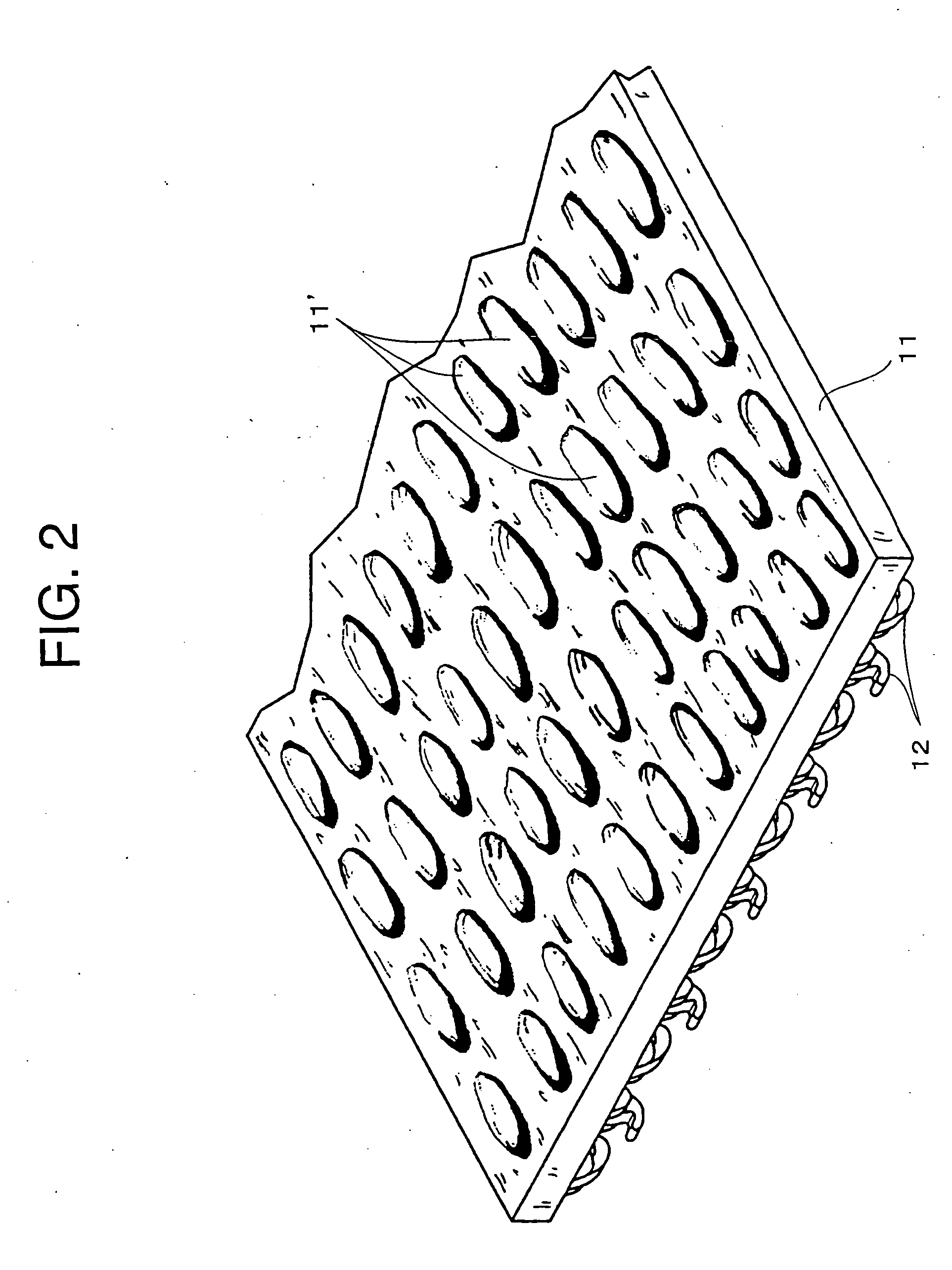Continuous molding method and molding apparatus for surface fastener
a molding method and surface fastener technology, applied in the field of continuous molding method of surface fasteners, can solve the problems of inability to emboss the surface of the flat base member of the aforementioned molded surface fastener inability to emboss the surface of the flat base member at one time in the formation region of the rotation roller, and inability to emboss the surface of the flat base member at one time in th
- Summary
- Abstract
- Description
- Claims
- Application Information
AI Technical Summary
Benefits of technology
Problems solved by technology
Method used
Image
Examples
first embodiment
[0031]FIG. 1 is a longitudinal sectional view showing a continuous molding apparatus and molding procedure for a molded surface fastener according to a first embodiment of the present invention. Although this embodiment adopts a hook piece as an engaging element formed on a surface of a base member, this embodiment is not restricted to this configuration and various types such as mushroom type or double leaves type may be adopted. The molded surface fastener of this embodiment is an ordinary surface fastener and no special notch or engaging row is formed on a rear surface of a flat base member having no engaging elements.
[0032] In this figure, reference numeral 1 denotes a (continuous) extrusion die, and a front end of the extrusion die 1 is formed as a circular face 1a having such a curvature which allows a predetermined gap to be formed with respect to a round peripheral surface of a die wheel 2 described later. This extrusion die 1 is constituted of a T type die, and as shown in...
second embodiment
[0038] Next, a second embodiment of the present invention will be described. FIG. 3 shows a continuous molding apparatus for a molded surface fastener and its molding procedure according to the second embodiment of the present invention. FIG. 4 is a sectional view taken along a line IV-IV in FIG. 3. In these figures, what is largely different from the first embodiment exists in a shape of the circular face 1a below the resin extruding port 1b in the extrusion die 1. The other configuration is not substantially different from the first embodiment. Hence, in the following description, different portions from the first embodiment will be stated specifically while the same components will be explained briefly.
[0039] According to this embodiment, as shown in FIG. 4, plural concave groove forming paths 1f are formed in parallel in the circular face 1a located below the molten resin reservoir 1c formed on the front surface of the extrusion die 1 such that they extend along a circularity. ...
third embodiment
[0042]FIG. 6 schematically shows a section of a continuous molding portion of a molded surface fastener according to a third embodiment of the present invention. This embodiment concerns a continuous molding apparatus for a molded surface fastener with an engaging row which is interposed between a mounting frame and a sheet material in order to attach the sheet material such as a curtain to the mounting frame, and its molding procedure.
[0043] Although this embodiment is different from the second embodiment in terms of dimension, the structure of the major components and its molding procedure are not largely different from the first and second embodiments. What is different from the first and second embodiments is that one or more engaging row forming paths 1h having an inverted-T shaped section one end of which communicates with the resin extruding port 1b while the other end is open to an end in the rotation direction of the die wheel of the circular face 1a are formed in the cent...
PUM
| Property | Measurement | Unit |
|---|---|---|
| melting point | aaaaa | aaaaa |
| time | aaaaa | aaaaa |
| friction coefficient | aaaaa | aaaaa |
Abstract
Description
Claims
Application Information
 Login to View More
Login to View More - R&D
- Intellectual Property
- Life Sciences
- Materials
- Tech Scout
- Unparalleled Data Quality
- Higher Quality Content
- 60% Fewer Hallucinations
Browse by: Latest US Patents, China's latest patents, Technical Efficacy Thesaurus, Application Domain, Technology Topic, Popular Technical Reports.
© 2025 PatSnap. All rights reserved.Legal|Privacy policy|Modern Slavery Act Transparency Statement|Sitemap|About US| Contact US: help@patsnap.com



